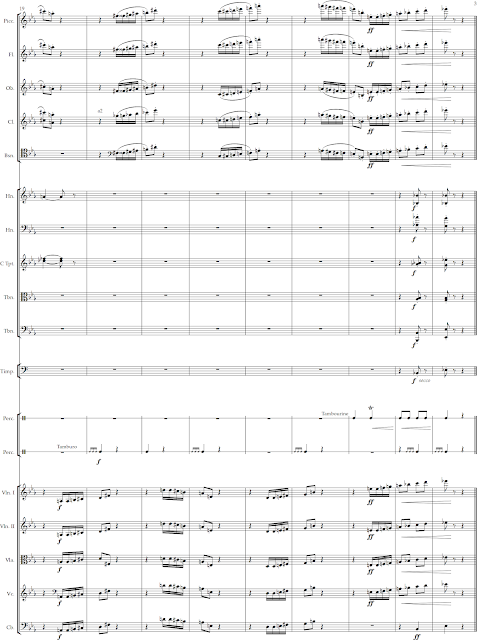CLXX. SHOSTAKOVICH, Dmitri (1906-1975)
Sandwiched between the mighty Eighth (1943) and Tenth (1953), this symphony feels like Prokofiev's First ("Classical") Symphony; it is short (around 25 minutes) and, like the Prokofiev, almost Haydn- or Mozart-esque.
**
One has to wonder whether Shostakovich was actually trying to piss off Stalin! After announcing plans for a great symphony with huge forces, including a chorus, and working on it for awhile, he completely abandoned the work, and instead came up with this light, frothy piece of orchestral fluff.
The Party was enraged and this -- along with the Violin Concerto #1 (1947-48) and From Jewish Folk Poetry (1948) -- were all banned from performance. Shostakovich was fired from the Leningrad Conservatory.
Even the American reviews were harsh:
"The Russian composer should not have expressed his feelings about the defeat of Nazism in such a childish manner." [New York World-Telegram, July 27, 1946]
Such were the events at the time just before the Second Denunciation.
**
First Movement
Note how he cleverly inverts the theme (bar 5) ...
He moves to the dominant (B-Flat) in a few moments, introduced by a two-note lick on a trombone (which will reoccur many times), and decorated with a simple theme on the piccolo:
Second Movement
From E-Flat Major to B Minor, an almost inexplicable key change. Shostakovich sets a gloomy mood here with a solo clarinet; perhaps a reflection of the recent horrors of war. The intensity builds throughout the movement ...
Third Movement
... and now G Major! A vivacious, slightly grotesque clarinet, immediately thickened with more winds, setting up a driving staccato rhythm in the strings:
Fourth Movement
The third movement winds down, and attaccas to B-Flat Minor; solemn trombones, followed by an obligato, mourning basson cadenza:
Fifth Movement
The mournful bassoon attaccas right into the final movement, with a jolly little theme in a lightly-paced Allegretto:
Eventually, all this becomes Presto and ends with an oom-pah trade off between the strings and winds, triumphantly ...



















No comments:
Post a Comment